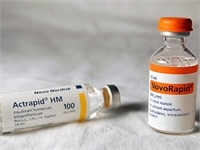
The Artificial Pancreas and Type 1 Diabetes
Important Notice: Our web hosting provider recently started charging us for additional visits, which was unexpected. In response, we're seeking donations. Depending on the situation, we may explore different monetization options for our Community and Expert Contributors. It's crucial to provide more returns for their expertise and offer more Expert Validated Answers or AI Validated Answers. Learn more about our hosting issue here.

The Artificial Pancreas and Type 1 Diabetes
You must be logged in to post a comment.
Type 1 diabetics are faced with managing their disease every waking minute of the day, from blood sugar testing to insulin dosages or insulin pump management. For Type 1 diabetics, their pancreas typically does not produce any insulin, eliminating the body’s ability to regulate blood sugar on its own.
With the search for a cure continuing daily, the Juvenile Diabetes Research Foundation (JDRF) has worked directly with the FDA to encourage the review and approval of what may be the best diabetes management alternative to hit the medical market to date – the artificial pancreas. Yes, I said the artificial pancreas.
FDA Review
The FDA has released its guidelines for the review and approval of this milestone device. Although it is still in the early stages of development and testing, clinical trials are showing significant success benchmarks and receiving rave reviews and results from patients. Patients who thought they were under tight control with their own manual management methods are discovering levels of control they never thought possible with this computerized management system.
How Does it Work?
The artificial pancreas is based on a continuous glucose monitoring system, also called a CGMS. An integrated sensor, inserted just beneath the skin, tracks the body’s blood glucose concentration to respond accordingly. When blood sugar levels increase, the artificial pancreas responds with small amounts of insulin, mimicking the function of the body’s own organ, which has failed in the case of most type 1 diabetics.
What Does it Mean?
The artificial pancreas system takes the hour-by-hour worry out of the hands of the patient, giving type 1 diabetics a degree of peace of mind and comfort unlike that of any other treatment method. The FDA is recommending three rounds of clinical trials as well as assurances surrounding the technology and its reliability.
This treatment advancement is one to follow closely. While it is certainly not a cure for diabetes, the artificial pancreas is a step in the right direction, providing a method for tighter control that can help reduce the occurrence of dangerous long-term side effects including vision loss, nerve damage and potential amputations.